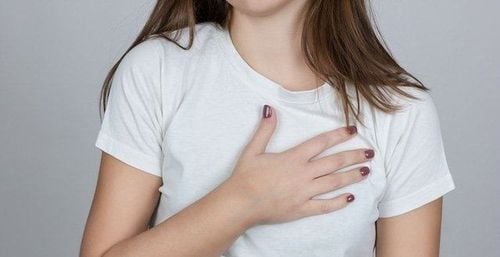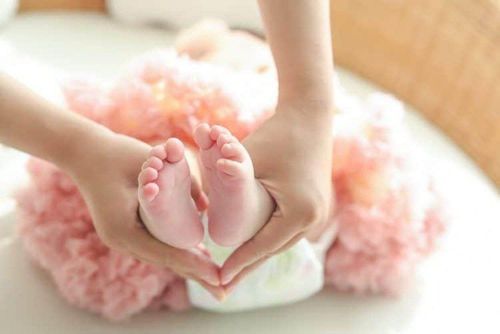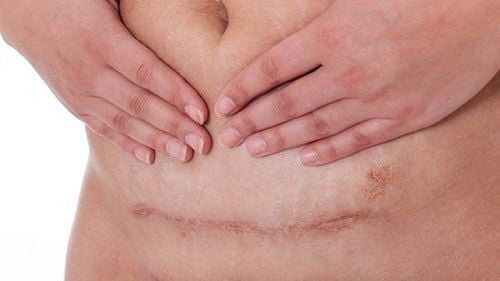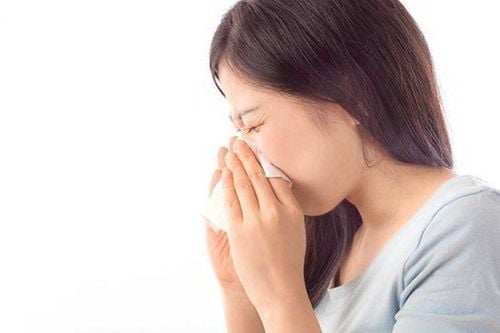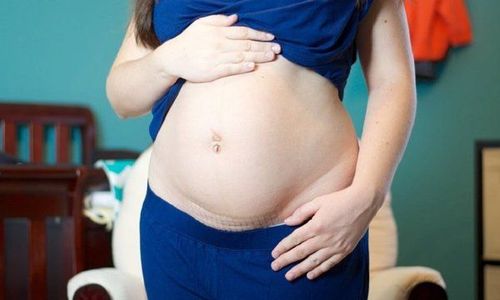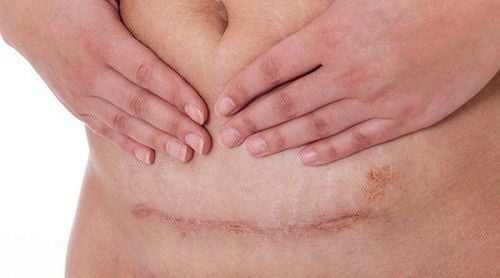This is an automatically translated article.
The article was consulted with Doctor Bui Duc Hoan - Department of Obstetrics and Gynecology, Vinmec Nha Trang International Hospital.Today, to avoid the pain of labor, many mothers choose to have a cesarean section. Due to the need to carry out surgery to bring the baby out, the recovery process of a woman having a caesarean section will also take longer than a normal birth and the level of pain will also be more. Therefore, how to reduce pain after cesarean section is always a top concern for women.
1. How to relieve pain after cesarean section?
Unlike normal birth, when choosing a cesarean section, mothers also have more things to pay attention to to protect their health. When a woman chooses to have a cesarean section, she will not feel pain during labor thanks to the support of anesthetics and anesthetics, but, when the anesthetic wears off, the pain will return and depend on Each person's body will recover quickly or slowly.In fact, there are many ways to relieve pain after cesarean section, not necessarily taking pain relievers. Although there are now many types of pain relievers after cesarean section, if you can tolerate them, you can apply some of the following methods:
Trắc nghiệm: Vì sao mẹ sinh mổ xong khó có sữa ngay?
Vì sao mẹ sinh mổ xong khó có sữa ngay là thắc mắc và lo lắng chung của nhiều sản phụ. Bài trắc nghiệm này sẽ giúp sản phụ giải đáp thắc mắc cũng như tìm hiểu được phương pháp gọi sữa về sau sinh mổ.The following content is prepared under supervision of Thạc sĩ, Bác sĩ y khoa, Tạ Quốc Bản , Sản phụ khoa , Khoa Sản phụ khoa - Bệnh viện Đa khoa Quốc tế Vinmec Phú Quốc
1.1 Plan a reasonable rest The birth process will make a mother lose a lot of health, that's why after you have "rounded mother and square child", please take time to take care of yourself by taking care of yourself. rest a lot. During the first 24 hours after giving birth, the mother should only lie down and relax, not exercise to avoid affecting the abdominal muscles. To reduce pain after cesarean section, absolutely do not stiffen the body, especially the lower abdominal muscles, practice inhaling and exhaling deeply. If you feel nauseous, urinate immediately to relieve pressure on the bladder (when the bladder is full, it will push the uterus higher and lead to painful uterine contractions).
1.2 Only eat after you have smelled After cesarean section, bowel movements are affected, so if the mother eats right away, it will cause the intestines to hold a lot of gas and the stomach is very weak at this time, so it will lead to diarrhea. to bloating, constipation, indigestion and pain. To reduce pain after cesarean section, women should only eat after they have smelled, after about 6 hours after giving birth, they should eat soft and liquid foods such as thin porridge, soups for easy digestion. After about 48 hours, the peristalsis has started to move normally, the mother can eat rice but should not eat too full.
1.3 Exercise early An effective way to reduce pain after cesarean section is that the mother should exercise early, it sounds absurd but in fact, when practicing gentle movement by sitting, walking or simply Just letting go of the legs on the bed can also help blood circulation and limit blood clots, thereby reducing pain quickly and effectively.
1.4 Using pain relievers after cesarean section When you feel the pain is beyond your tolerance, you can talk to your doctor about whether you can use pain relievers after cesarean section. In fact, pregnant women can use some pain relievers if the pain is beyond tolerance. Depending on the patient's condition, the doctor will specify which pain reliever to use, the mother can be completely assured because the composition of the drug does not affect the milk supply for the baby. In addition, a method Another effective method to help reduce pain after cesarean section is an epidural, which is a method to help relieve pain after surgery, which has the effect of controlling the patient's psychophysiology with few side effects.
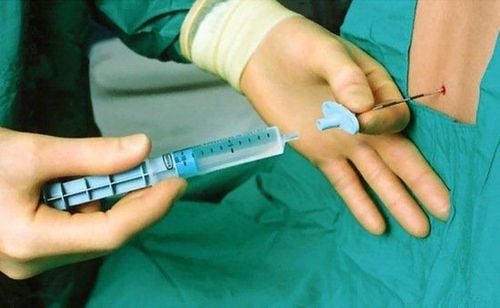
2. Scientific care after cesarean section
Taking care of pregnant women after cesarean section needs to be done in a scientific way to help them recover quickly and have fewer complications in the postoperative period.2.1 How to take care of the incision In the first week after giving birth, when the incision has not yet healed, the cleaning of the incision needs to be done daily. If the mother is in too much pain, she can use pain relievers, antispasmodic drugs. supply ... to avoid complications, infections.
When entering the second week, when the incision is dry, the doctor will proceed to cut the sutures (if sutures with dissolvable sutures are not required), usually, the doctor will proceed to cut the sutures after 5 days if the product First time caesarean section and after 8 days if the second caesarean section or more. During this time, the mother should not soak her body in the bath, which will make the incision wet. Every day, you should use clean cotton to dry the incision and then cover it with a bandage to keep the incision dry and clean. Absolutely do not apply antibiotics, or apply garlic, betel leaves to the incision.
2.2 Nutritional care Doctors recommend that women after cesarean section are not allowed to eat anything within 6 hours after surgery because at this time the bowel movement is very low and the intestines are full of gas and stomach. The stomach works very weakly, so if you eat it, it will be very difficult to digest, making the body even more tired.
After sniffing, pregnant women can eat thin porridge or soup, soft food. In the following days, you can eat and drink as usual, pay attention to add foods rich in protein and calcium, vitamins A, B, C, Vitamin K and trace elements such as zinc, iron, copper, drink plenty of water to prevent dehydration and have plenty of milk for lactation.
Note, after cesarean section, pregnant women should not use foods that are easy to cause allergies or diarrhea, keloids such as seafood, chicken, seafood, water spinach...
2.3. Breastfeeding
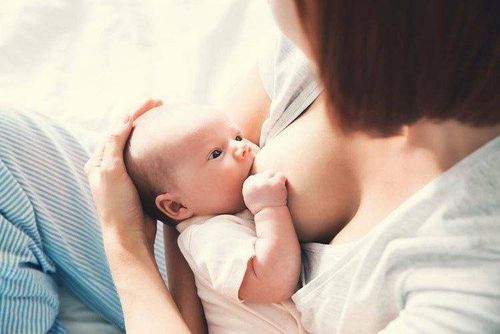
Many women are afraid to breastfeed immediately after cesarean section for fear of the effect of local anesthetic on milk, however, this is completely wrong and mothers can breastfeed after the first hour after cesarean section by means of a cesarean section. Under general anesthesia, if you have general anesthesia during delivery, you can breastfeed your baby after about 6 hours. Early breastfeeding will help bond the mother and mother, strengthen the baby's resistance, and help the mother's uterus recover quickly, reducing the risk of bleeding.
2.4. Attention to hygiene after cesarean section Women can completely wash their faces, brush their teeth, and rinse their mouths every day after giving birth, but choose a soft brush and use warm water.
Every day should wash the body with warm water and dry the body. After 10 days or more, you can bathe as usual, but you should bathe in a well-ventilated room, take a quick shower, and avoid wetting the incision.
3. Signs to watch out for in the postoperative period
During the postoperative period, pregnant women should pay attention to some problems in the body such as:Fever: This may be the body's response to an infection of the incision or it may also be due to lack of water, warm clothes. excessive or engorged breasts. Eclampsia: Whether vaginal birth or cesarean section, the discharge will still be pushed out through the vagina, this is also a sign that the uterus is recovering well. During the first few days, the discharge will be bright red and the amount of discharge will gradually decrease and turn pink and brown as the endometrium shrinks. From day 10 onwards, the discharge will be slightly yellow, colorless. Pregnant women need to pay attention to the color and amount of discharge to make sure there is no problem with the body. In case the discharge has a bad smell or the discharge is bright red after many days, it is necessary to notify the doctor immediately because this may be a sign of residual placenta, postpartum infection or very dangerous bleeding. Redness or discharge from the incision: When the incision is not healing, but it is increasingly showing signs of swelling, redness, and discharge, notify your doctor immediately because it may be a sign of infection. Postoperative analgesia is pain relief with spinal anesthesia and medication. Post-operative pain significantly decreased from the 5th day after surgery and from the 7th day onwards, the woman recovered. Pregnant women should be examined to check after surgery from the 3rd week onwards, after 7 days after surgery, there is still a lot of pain and need to be examined immediately.
Vinmec International General Hospital applies the painless delivery method with a team of professional anesthesiologists and resuscitators, so pregnant women will no longer have to struggle with pain. For pregnant women who have had a caesarean section, they will be anesthetized by an ultrasound machine in the treatment of postoperative pain. The most recent results of analgesia evaluation showed that: All pregnant women who gave birth by caesarean section did not have to use morphine, and post-partum pain when moving and living was almost no longer recorded.
Please dial HOTLINE for more information or register for an appointment HERE. Download MyVinmec app to make appointments faster and to manage your bookings easily.





